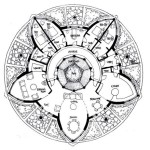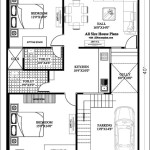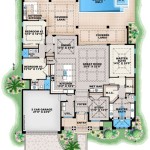Insulated Dog House Plans: A Guide to Free Resources and Construction
Ensuring a comfortable and safe environment for canine companions necessitates providing adequate shelter, particularly during harsh weather conditions. An insulated dog house serves as a crucial barrier against extreme temperatures, offering protection from both the winter's chill and the summer's heat. While commercially available insulated dog houses exist, constructing one independently can be a cost-effective and personalized solution. This article explores the realm of free insulated dog house plans, providing guidance on accessing these resources and outlining key considerations for their effective implementation.
The internet offers a plethora of free dog house plans, ranging from simple designs suitable for novice builders to more complex structures that require advanced woodworking skills. These plans are generally available through various online platforms, including woodworking websites, DIY blogs, and manufacturer websites. It is crucial to critically evaluate these plans, ensuring they include detailed dimensions, material lists, and step-by-step instructions. Plans that lack clarity or completeness may lead to construction errors and ultimately compromise the dog house's functionality and structural integrity.
Before embarking on the construction process, a comprehensive understanding of insulation principles and materials is essential. Insulation minimizes heat transfer, maintaining a stable internal temperature within the dog house. Different types of insulation materials are available, each possessing varying levels of thermal resistance (R-value) and suitability for different climates. Selecting the appropriate insulation material is critical to achieving optimal thermal performance.
Key Point 1: Finding and Evaluating Free Dog House Plans
The accessibility of free dog house plans online is both a benefit and a potential challenge. The sheer volume of available options can be overwhelming, necessitating a systematic approach to identifying suitable plans. Start by utilizing search engines with specific keywords such as "free insulated dog house plans," "DIY insulated dog house," or "dog house plans with insulation." Broadening the search to include phrases like "small dog house plans" or "large dog house plans" can further refine the results based on the dog's size.
Once a selection of potential plans has been identified, the evaluation process begins. A thorough review of the following aspects is recommended:
Dimensional Accuracy: Verify that the plans provide complete and accurate dimensions for all components of the dog house. Discrepancies or ambiguities in the dimensions can lead to miscalculations and construction errors.
Material List: Assess the material list for clarity and completeness. The list should specify the types and quantities of all materials required, including lumber, insulation, fasteners, and any finishing materials. Consider the availability and cost of the listed materials in the local area.
Step-by-Step Instructions: Examine the step-by-step instructions for clarity and ease of understanding. The instructions should guide the builder through each stage of the construction process, from cutting the lumber to assembling the final structure. Look for visual aids such as diagrams or photographs that illustrate each step.
Insulation Strategy: Evaluate the insulation strategy outlined in the plans. The plans should specify the type of insulation to be used, its R-value, and the method of installation. Consider the climate in which the dog house will be used and select an insulation material with an appropriate R-value.
Structural Integrity: Assess the overall structural integrity of the design. The dog house should be sturdy and able to withstand the elements. Look for features such as reinforced corners, a sloped roof for water runoff, and a raised floor to prevent moisture from entering the house.
Customization Options: Determine if the plans offer any customization options. The ability to modify the size, shape, or features of the dog house allows for a tailored design that meets the specific needs of the dog and the owner.
Critically evaluating these factors will help ensure that the chosen plans are suitable for the builder's skill level, the dog's needs, and the local climate. It is also advisable to consult with experienced builders or woodworking professionals for guidance and advice before commencing construction.
Key Point 2: Choosing the Right Insulation Material
Selecting the appropriate insulation material is paramount to the effectiveness of an insulated dog house. The chosen material should provide adequate thermal resistance, be safe for the dog, and be resistant to moisture and pests. Several insulation options are commonly used in dog house construction, each with its own advantages and disadvantages.
Rigid Foam Insulation (Polystyrene or Polyisocyanurate): Rigid foam boards offer high R-values and are relatively easy to work with. They are typically installed between the framing members of the dog house walls, roof, and floor. However, rigid foam can be susceptible to damage from chewing and may require a protective barrier to prevent ingestion by the dog. Polystyrene is less expensive but has a lower R-value than polyisocyanurate.
Fiberglass Insulation: Fiberglass batts are another common insulation option, offering good thermal performance at a relatively low cost. However, fiberglass can be irritating to the skin and respiratory system, requiring careful handling and installation. It is also susceptible to moisture damage and should be protected with a vapor barrier. Furthermore, loose fiberglass particles can pose a health hazard to the dog if ingested.
Reflective Insulation (Radiant Barrier): Reflective insulation consists of a thin layer of reflective material, such as aluminum foil, bonded to a backing material. It works by reflecting radiant heat away from the dog house, helping to keep it cool in the summer. However, reflective insulation is less effective in cold climates and does not provide significant insulation against conductive heat transfer. It must also have an air space to function properly.
Denim Insulation: Made from recycled denim fibers, this is a more eco-friendly option. It offers good thermal and acoustical performance, is non-toxic, and is relatively easy to install. It is also treated to be resistant to mold and pests. However, it may be more expensive than fiberglass or rigid foam.
Spray Foam Insulation: Spray foam provides excellent insulation value and can seal air leaks effectively. However, it can be more expensive than other insulation options and requires specialized equipment for installation. Open-cell spray foam is more breathable but has a lower R-value than closed-cell spray foam. It's crucial to ensure proper ventilation during and after application to avoid potential health risks.
When selecting insulation material, consider the following factors:
R-value: The R-value measures the insulation material's resistance to heat flow. Higher R-values indicate better insulation performance. Choose an insulation material with an R-value that is appropriate for the local climate.
Safety: Ensure that the insulation material is safe for the dog and does not pose a risk of ingestion or irritation. Avoid materials that contain harmful chemicals or fibers.
Moisture Resistance: Select an insulation material that is resistant to moisture damage. If using fiberglass or other moisture-sensitive materials, install a vapor barrier to protect the insulation from moisture.
Pest Resistance: Choose an insulation material that is resistant to pests such as rodents and insects. Some insulation materials are treated with chemicals to deter pests.
Cost: Consider the cost of the insulation material and factor it into the overall budget for the dog house. Compare the costs of different insulation options and choose the one that provides the best value for the money.
Key Point 3: Construction Considerations for an Insulated Dog House
Constructing an insulated dog house requires careful planning and execution to ensure its structural integrity and thermal performance. Several key considerations should be taken into account during the construction process.
Framing: The framing of the dog house should be sturdy and well-constructed. Use pressure-treated lumber for the base of the dog house to prevent rot and decay. Securely fasten the framing members together with screws or nails. Ensure that the framing is square and level to prevent drafts and ensure proper alignment of the walls and roof.
Ventilation: Proper ventilation is essential to prevent condensation and maintain a healthy indoor environment. Provide ventilation openings in the roof or walls of the dog house. These openings should be screened to prevent insects from entering. Consider using adjustable vents that can be closed during cold weather to conserve heat.
Doorway: The doorway should be sized appropriately for the dog. It should be large enough for the dog to enter and exit comfortably but small enough to minimize heat loss. Consider adding a flap or curtain to the doorway to further reduce drafts. The flap should be made of a durable, weather-resistant material that is easy for the dog to push through.
Roof: The roof should be sloped to allow water runoff. Use waterproof roofing materials such as asphalt shingles or metal roofing. Ensure that the roof is properly sealed to prevent leaks. Overhanging eaves can help protect the walls from rain and snow.
Floor: A raised floor helps to prevent moisture from entering the dog house. The floor should be constructed of sturdy materials such as plywood or treated lumber. Consider adding a layer of insulation beneath the floor to further improve thermal performance.
Sealing: Seal all joints and seams in the dog house to prevent drafts. Use caulk or weather stripping to seal gaps around the doorway, windows, and roof. Insulating the interior of the dog house with a non-toxic and dog-safe sealant can also improve energy efficiency.
Finishing: Apply a weatherproof finish to the exterior of the dog house to protect it from the elements. Use non-toxic paints or stains that are safe for the dog. Consider adding decorative elements such as trim or siding to enhance the appearance of the dog house.
Safety: During construction, prioritize safety. Wear appropriate safety gear, such as gloves, eye protection, and a dust mask. Use power tools safely and follow all manufacturer's instructions. Ensure that the construction area is clear of hazards.
By carefully considering these construction aspects, the insulated dog house will provide a safe, comfortable, and weatherproof shelter for canine companions, protecting them from the elements year-round. The use of free plans, combined with informed material selection and diligent construction practices, allows for a cost-effective and rewarding DIY project.

Cold Weather Dog House Plans Bradshomefurnishings Winter Diy Insulated

Insulated Dog House Plans Myoutdoorplans

14 Diy Dog Houses How To Build A House Plans Blueprints

Insulated Dog House Plans Free Garden How To Build Projects

Insulated Dog House Diy Plans

How To Build An Insulated Dog House Howtospecialist Step By Diy Plans

Insulated Dog House Plans Wilker Do S

Large Dog House Plans Free Construct101

Best 25 Insulated Dog Houses Ideas Only On House Diy Plans

Dog House Plans Free Diy Projects Construct101








